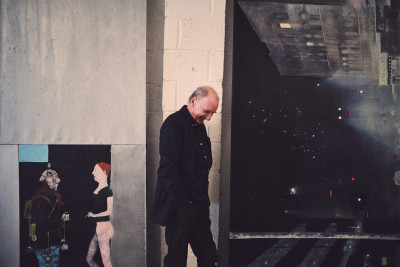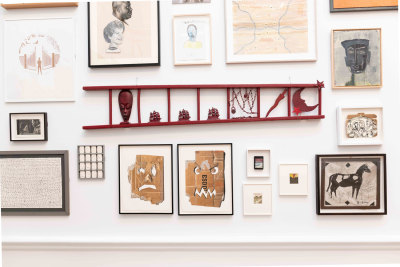10 minutes with… Alan Stanton RA
10 minutes with… Alan Stanton RA
By Harriet Baker
Published 29 January 2015
Each month, we have a quick chat with one of our Academicians to find out what they’re up to and what the RA means to them.
-
Architect Alan Stanton formed the partnership Stanton Williams with Paul Williams in 1985. Working from their canal–side Islington studio, they have been responsible for a number of critically–acclaimed projects, including the Central St Martins at King’s Cross and the Millennium Seedbank in Sussex. In 2012, the practice was awarded the Stirling Prize for the Sainsbury Laboratory in Cambridge.
What are you working on at the moment?
The great thing is that we have a wide range of projects, small and large that challenge us and keep us on our toes. Currently, our design for the Grand Musée d’Art in Nantes is on site and beginning to take shape, which is very exciting for us. Here in London, our ‘Open-Up’ project for the Royal Opera House will create a new Linbury Theatre, new public foyers with a terrace restaurant and rooftop ballet studio. Also in London, we are designing a new research centre for rare children’s diseases at Great Ormond Street Hospital. In Cambridge, we are designing a new extension to the Judge Business School and a creating a residential neighbourhood within the North-West Cambridge project, a major urban extension to the city.
-

Sainsbury Laboratory, Hufton+Crow

Royal Opera House - ‘Open Up’, Stanton Williams
-
What is your earliest memory of architecture?
I spent my childhood in Northamptonshire, which has many fine parish churches: those were my earliest experiences of looking at architecture. My cycle trips to explore them combined with a passion for making things – began to suggest to me that I might become an architect.
What piece of architecture do you wish you had designed?
There are quite a few! Whenever I feel a sense of envy I think it’s a strong indication that there is something very special going on. When we were working on the Sainsbury Research Laboratory, one of the buildings that came to mind, from when I lived in California, was Louis Kahn’s Salk Institute in La Jolla. It is a seminal project with tremendous authority and strong sculptural qualities that derive from its setting overlooking the Pacific. I think it became a kind of benchmark against which we could judge our own efforts.
At the other end of the spectrum, last year I finally was able to visit the wonderful small Byzantine church of S. Vitale in Ravenna. I don’t think I have been ever as deeply moved by a building. It was inspirational to experience the emotional power of great architecture.
-

Salk Institute at La Jolla

The Byzantine church of S. Vitale in Ravenna
-
How do you know when a piece of work is finished?
Of course we are never quite satisfied, but we have to remember that architecture is a public art, and is never really finished. When a building is completed it’s the beginning of its life – a life which really only starts when people inhabit and breathe life into it. Buildings change, evolve and grow. The problem for the architect is to let go!
Where were you when you found out that you had been elected to the Royal Academy?
It came out of the blue when Eric Parry telephoned me. I was flabbergasted!
What does the RA mean to you?
The RA is very special because it links all the visual arts, including architecture, together. Being an Academician is a great honour which I see as a reflection of the work of our practice. The work of artists has always been an inspiration to Paul and me. Although we work with quite a few artists within our projects, through the RA it is wonderful to have that direct contact and friendship with some of the best artists in the world.
If you were President of the RA for the day what would you change?
Well, it would take more than a day! The RA is embarking on a very exciting and challenging period of change with its expansion into 6 Burlington Gardens. Inevitably when any organisation moves into a new building it is a chance to reinvent itself and to develop its culture. There is a great opportunity here to “animate” all the spaces of the enlarged RA with a wide range of less formal activities, extending into the evening and even the weekends. This has the potential to expand and diversify our audiences, to encourage cross-arts events and to help the RA raise its game as a forum for the arts.
One can imagine a future RA alive with ‘pop-up’ exhibitions and events: music, poetry, dance, theatre: all the visual arts woven together to create a continuous and vibrant buzz.
Read more about the work of Alan Stanton RA.
-
We have to remember that architecture is a public art and is never really finished. When a building is completed it is the beginning of its life and that only starts when people inhabit and breathe life into it. Buildings change, evolve and grow.
Alan Stanton RA







